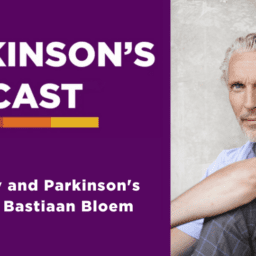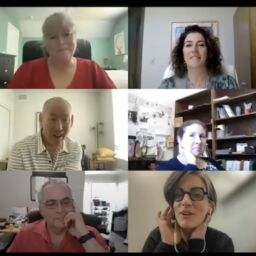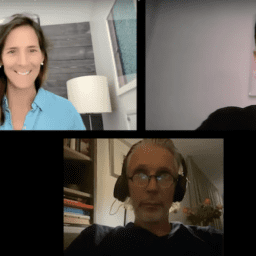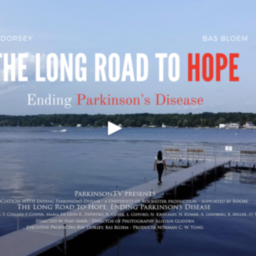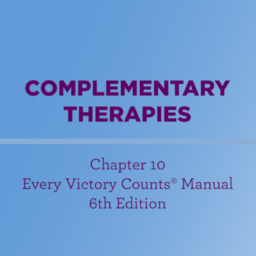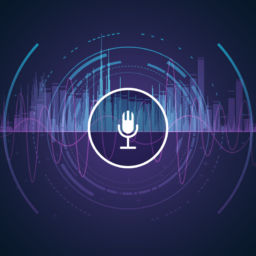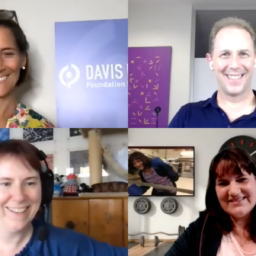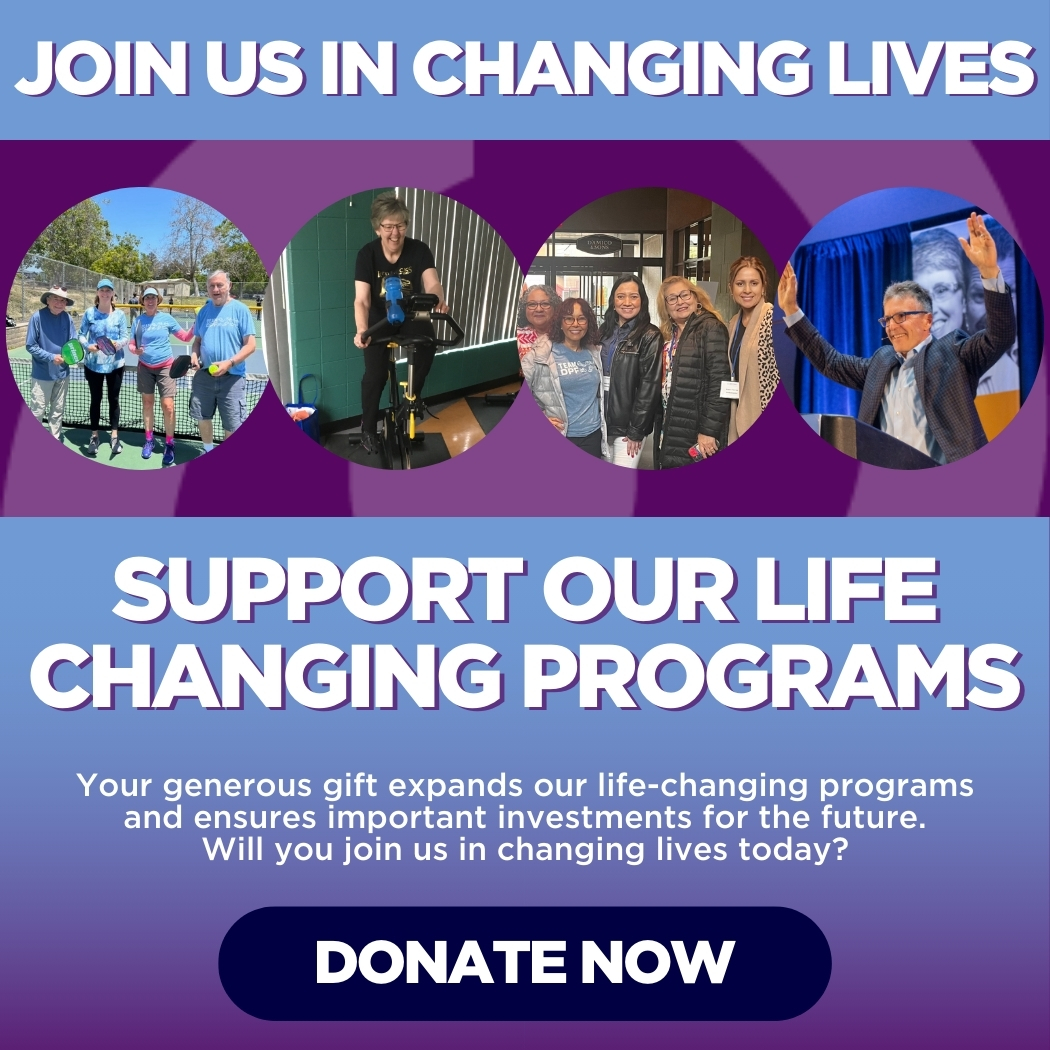Speech and voice impairments are common among people living with Parkinson’s. As many as 90% of people with Parkinson’s experience difficulties such as “hypophonia” (soft speech) or a more monotone, raspy, or breathy voice. Speech can become less intelligible and can make communication difficult, especially if paired with facial masking (a decrease in facial expression). It will come as no surprise then that speech and voice impairments can impact quality of life.
Speech and Language Pathologist John Dean recently sat down with us to discuss the various speech challenges related to Parkinson’s and actions you can take every day to train your voice, improve your speech, and communicate more fluidly and clearly.
You can read the transcript below or download it here.
Melani Dizon (Director of Education and Research, Davis Phinney Foundation):
Hello and welcome everybody. My name is Melani Dizon. I'm the Director of Education and Research at the Davis Phinney Foundation. And if you are here for the Speech, Voice, and Parkinson's webinar with John Dean, you're in the right place. Hi, John, how are you?
John Dean, MA, CCC-SLP (Speech and Language Pathologist, Triad Health AI) I'm great. I'm great.
Melani Dizon:
Awesome. Cool. Where are you calling in from right now?
John Dean:
I call it Cincinnati South. I'm just across the river in Kentucky. My dad has a house right on the river.
Melani Dizon:
That's awesome. I'm super excited to talk about this topic. It's very popular topic; it’s one of the more registered for webinars we've had in a while, which is saying a lot. We're going to get started. I just want to let everybody know as they're getting on that John and I are going to have sort of an interview, talking about lots of things having to do with speech language pathology, voice, and Parkinson's. And then throughout the time you can speak to us through the chat box.
I'm going to tell you a little bit about John, just a little bit, and then he's going to tell you more about himself. So John Dean is, among many, many other things, a speech language pathologist who specializes in the treatment of Parkinson's and related disorders with certifications in LSVT Loud, Speak OUT, and Parkinson’s Wellness Recovery. He's also a member of our Science Advisory Board. He's been involved in a number of technology projects and startups, developing tools to improve quality of life for people living with Parkinson's. Previously he was the founder of a network of interdisciplinary Parkinson's rehab programs, programs modeled upon ParkinsonNet in the Netherlands. And he developed several networks of interdisciplinary Parkinson's teams based on his model for a large skilled nursing company in the US. He currently leads Triad Health AI, and it's his startup that uses smart speakers to slow the effects of Parkinson's. Did I get it all right, John? Anything else we need to add? Okay.
So let's get started. John, first of all, how did you get involved in working with speech therapy? Where, what sparked your interest, and then in particular, working with the Parkinson's community?
John Dean:
Yeah, it's kind of strange because I came to this as a second career. I'm a late bloomer, as I like to say. And I was actually a professional musician for a number of years, and I had an injury that ended my career. I had a problem with my hands and it meant I couldn't play. And you know, I was teaching up at the University of Dayton at the time, and because I couldn't play anything, I would start singing things. So I had my hands, and I’d play a chord — and then this is what I want them to do for the improv — and I had no technique. I injured myself almost immediately. I mean, very quickly. Like, “Oh wait, hi.” And then I went down to a very well-known vocologist, which is a speech therapist that specializes in voice. And I just liked what he was doing. And he was brilliant. So it got me interested in the field.
So I went to grad school here in Cincinnati at the University of Cincinnati, had to do all that leveling stuff. It was painful, but at the time my hands were still quite damaged. I had a lot of issues. And so I was using speech recognition software and did some research. Actually, I got a grant here while I was here and did some research and then moved to Colorado to work with another team out there and an electrical engineer. And when I got out to Colorado, it was amazing and I loved it. And then that engineer got the endowed chair down at UT Dallas, and I opted not to go with him.
I started back into practice, and I was working in a skilled nursing facility, in a nursing home. And I knew I wanted to get better familiar with how to help people with Parkinson's. And luckily LSVT was — half of it, half of the founding team is right there in Boulder. And so I did the training and they were just setting up a program that combined the LSVT Loud with the LSVT Big; they going to make a hybrid program that never came to fruition, but it inspired me. And so I started a Parkinson's team and then that did very well. So we started another one and eventually that's the network.
I really very much modeled that network of interdisciplinary teams on the Dutch model and the Bas Bloem ParkinsonNet. And their whole take on things was that nobody living with Parkinson's should have to travel more than 20 minutes or so to see a therapist and a nurse that knows Parkinson’s. The doctors are still at the hospitals. Dr. Bloem’s hospital's down at Nijmegen near the border of Germany, but there was always a therapist nearby. And that's kind of what was going on in Colorado at the time. You know, we had a lot of great doctors, but they're all down in Aurora and Englewood, you know, so if you're practicing in Boulder or eventually I was in Longmont, you know, it's a 45-minute or hour drive.
So we did that. It was great. And that program did very well, but by the time I was getting that growing up there, I started working on a startup. I was building an app that would measure symptoms of Parkinson's working with a great engineer in Boulder. And then what happened there? Oh, that app got a bunch of awards. We were really happy with it, but no one was using it. I think apps are very difficult for many people with Parkinson's due to the form factor. And I left to go to a project with the Foundation. And then after that project, I went and started the next startup with my now wife, with Josefa Domingos, Portuguese physiotherapist extrordinaire, where we do our dual-task exercise that we've been collaborating on, and we use those devices to help with it. So that's kind of where it all started.
Melani Dizon:
Great. A lot of questions came in. First of all, what, what instruments did you play?
John Dean:
I had a classical bass. That was an upright bass. I had a classical degree; I played mostly jazz, taught mostly jazz. And you know, played electric and a lot of stuff, but mostly upright bass.
Melani Dizon:
Okay. Leigh put some information about LSVT, but I think part of it is, you know, we’re so used to saying it all the time and not everyone's used to hearing it. So, John, can you tell people what LSVT is?
John Dean:
Okay. This is so interesting because LSVT Loud started off as Lee Silverman Voice Therapy in the early, mid-eighties. And it was a situation where a woman named Lee Silverman living with Parkinson's was dealing with the quiet voice that many people associate with the disease, with Parkinson’s, and collaborated between, I believe it's Cynthia Fox in Tucson and Dr. Lori Ramig in Boulder. And they came up with the program that increased the volume and started to get some good outcomes. And I mean, that was 1986, I think. Maybe, maybe a little earlier. I'm sorry, doctors, if I'm misquoting it. And it's gone on to get four lines of NIH funding, multiple, multiple grants; they publish so regularly. Dr. Ramig sent me a study recently. I mean, they publish in top journals. They have some of the only level-one evidence, which means a randomized study that's double-blinded, which is almost impossible to do in our field.
And they made a sham protocol. They trained a bunch of graduate student clinicians and had them do that. And then they compared it to the real therapy. And that's almost impossible to do in our world. So that's Lee Silverman Voice Therapy, LSVT Loud now because they made a physical therapy variant. It was a post-doctoral program for Becky Farley, Dr. Becky Farley, who went on to build Parkinson's Wellness Recovery. So the lineage is, I always like to say, I think we're really here because of the work of Drs. Ramig and Fox, because they came up with that concept and they've done a great job of researching it. And now we've, I think we've all taken it and we've run. And I don't really do their exact approach anymore, and if I don't do it their way, I never call it LSVT, because they're very careful about that, but I am always impacted by their research and their efforts.
Melani Dizon:
Yeah. That's great. Leigh, actually, if you can put up the link—yeah, there we go. She just put it up. She's reading my mind. Okay. So let's start with, what does a speech language pathologist do for people with Parkinson's? What are the things that you help people with it specifically?
John Dean:
Okay. As a speech therapist or speech language pathologist, and I use those pretty interchangeably, I think one is a term of art, but I think most people call us a speech therapist. It's gonna deal with communication for sure, first and foremost. And that could be the quiet voicing. It could be difficulties producing certain sounds. It could be some of the language related parts of that. It could be a lot of other things on that pathway. So communication is probably first and foremost. As important in my mind is swallowing issues, and swallowing problems are very common. I think our research is really littered with studies that show, when people ask a person with Parkinson's, you know, “Are you dealing with a swallowing problem?” And they don't identify it. And maybe even the clinician does have what we call bedside, where they look inside their mouths and they do the things you would do without the instrumentation. They may only identify it and half the time or even less. And then you put them into a suite and you do an instrumental exam. And actually almost everybody has it at some level, depending on what the problem is.
So communication, swallowing dysfunction, and then cognition. And cognition, I would say, as it really ties into language. Although I do a lot in my practice with a physiotherapist and we collaborate a lot. So we do an awful lot with attention and alternating and working, sustained attention and working memory kind of stuff. But I think the three big pieces are communication, swallowing, and cognition.
Melani Dizon:
Okay. So can you take each one of those and just give people an example of, what are some things that you might do for the speech? Let's start with speech.
John Dean:
Yeah. And I think the speech side of it, I think probably the most most recognized, I'd almost call it a clinical hallmark, although if you look in medical research, the hallmarks are usually motor symptoms, you know tremor and rigidity, which is muscle stiffness, and bradykinesia, but the quiet speech or the hypophonia, it appears, I won't say universally, but it's very common. And in fact, if someone doesn't present with it, I'm going to look a little closer to make sure that the diagnosis is exactly in line with what we're seeing. And then if you have issues with your voice and you're not loud enough, oftentimes the rest of your articulatory precision is a little bit off. You get what we call a, you just get a little noise in a signal. I won't use the medical terminology.
And then occasionally you have a situation where someone might have some fluency issues, which is a fancy term for stuttering. And that's not to be confused with verbal fluency, and I'll get into that with cognition. But that's another area we can address. Sometimes after DBS or changes in medications that happens. Oftentimes I find it's easier to address the medical side of it. I can't always fix those things. So that would be the speech side of that. Quiet voicing probably first and foremost. In precise, inter articulation often, if you make the voice louder, that'll work itself out. And then some of the word finding and the other kind of components of that would be in the language part of the communication.
Melani Dizon:
Okay. What about swallowing?
John Dean:
Yeah. It’s interesting because again, it's very under-recognized. People often don't recognize a swallowing disorder, but then they tell me, “I have trouble with my pills, feeling like they're getting stuck here.” Sometimes that pill dysphagia — dysphagia is the medical term that you'll see sometimes for swallowing dysfunction, swallowing problems — sometimes I’ll see “deglutition disorders” if I’m doing research in Europe, that seems to be the term of art over there — and again, many people don't understand that they have a swallowing issue. And as a therapist, I'm looking for key markers that might indicate swelling problem. So that could be a matter of getting food in your mouth and keeping it where it should before you swallow it. You know, some of the stuff you're doing in the real phase, a lot of times it's issues where the airway protection that happens naturally in the body with the epiglottis flipping over to it, to basically protect the airway where food goes into the esophagus, that's a key area. And it’s a very high risk for aspiration pneumonia, and aspiration pneumonia is extremely serious.
And that's why I think it's not as well recognized, because it has very serious ramifications. But then you know, actually the speaking of Dr. Bloem’s clinic, I was actually over there maybe eight years ago, it was in 2013, and I was doing a little training for their speech therapy team over there. And Hannah Kauf, their speech therapist, gave me her dissertation on drooling. And it was interesting because people who are drooling actually are often at higher risk for having more swelling problems later on. It's a key early indicator. Another one would be, people that have the kind of Parkinson's that doesn't have tremor, so that what we call rigid akinetic, those people often have more midline issues, and swallowing dysfunction is part of that. And then, swallowing issues go all the way down into the esophageal phase, and then there's the issues with motility in the stomach. But this gets farther and farther away from my practice. And at this point I'm counseling you and you're working with a gastroenterologist or another doctor.
Melani Dizon:
Okay. Leigh, if you could do me a favor. So we have a really cool video that Kathleen Donahue did with us where she showing the aspiration. So she's inside the mouth and showing everything. So if you could find that link and share that with everybody so that you can see the visuals for sure. It really, it's super interesting. Yeah, just so you know, we're going to share all the links that John is talking about in the session. If we don't share them during the session, we will share them in the show notes. So we will make sure that you have everything. Okay. So now let's move to cognition. Cognitives speech issues.
John Dean:
Yeah. And this is, it's amorphous, you know? We know that there are certain cognitive issues that show up in Parkinson's. A lot of them have to do with attention and the ability to sustain and alternate attention. It's not at all, like, I would say someone dealing with other kinds of neurodegenerative diseases, like Alzheimer’s, where it's not a memory issue where they can't remember something. It’s more like they can't pull it up very quickly. They can't get the word up quickly. That's the verbal fluency, where we're talking about many people with Parkinson's always report, like, “I had this problem with word finding and it, and it really hurts my ability to communicate in groups because I can't keep up with the conversation because I'm trying to get the word out.”
And I remember Benzi Kluger used to have this great little cartoon in all of his lectures. And it was like, “Oh, I have a photographic memory. You know, it takes 20 minutes for anything to develop.” And it's like, that's kind of what we're talking about. So that's one very consistent issue in Parkinson's and specific to speech. But I think cognition really crosses all of our domains, and the OTs have great experience. The PTs are working on it, but I would say a lot of it for Parkinson's is retrieval — not, you know, getting to, accessing the information you need. Not so much some of the other things you might associate with other diseases. I'll leave it there and say again, it's a big, big, big, big area, but a lot of it has to do with executive function, the very high-level keeping track of things. And then if someone is starting to travel somewhere and then they get an obstacle coming in their way, of being able to plan around that, that's definitely impaired in Parkinson's.
And if you happen to do more than one activity at the same time, dual tasking — and I would say life is a dual-task activity. In my opinion, we all dual task all the time — there are definite indications of impairment and that very much is what Josefa, my colleague, my now wife, the physiotherapist, and I work on, because we think that that's the easiest way to train things that you encounter in real life. And it's kind of more fun anyways. They've enjoyed it more. So they do more work. Dr. Bloem, now I think about it, had a really interesting paper, 13, 14 years, a while back. And it was a posture second strategy that people with Parkinson's sometimes take when they're encountering a dual test. So many of us would protect our posture and stay upright so we wouldn't put ourselves at risk for falling, but in individuals with Parkinson's, sometimes it seems like the focus on the posture gets out of whack and that puts them at a higher risk for falls.
Melani Dizon:
Okay, great. All right. So maybe we could talk a little bit about some treatments, but let's go back to the communication. Let's see what you can share.
John Dean:
Yeah, I mean, I think the groundwork that was laid by LSVT Loud, the Lee Silverman Voice Therapy, is where I usually start, but it's very much problem-based, you know. So quiet speech, which is very common in Parkinson’s. I also do another program called Speak OUT out of Richardson, Texas, and that's Samantha Elandary’s group. And they’re similar, but then they diverge in some of the ways that they apply it. And I think Samantha has got a very good handle as a clinician on how to take the concepts of increasing the intensity and making the volume louder and over-practicing and making the muscles really strong to applying that to sentences and more cognitive load. I would say that the work I do with Josefa, with the Triad and the other stuff that we do, we take that to a couple levels farther — it’s the voice and the communication in conjunction with the dual task and the cognitive loading, it just makes it look more like what we do. You know, we walk around on the phone all the time, taking dishes out of dishwasher, answering to somebody when they're doing that. That's what we do with that. So the communication starts maybe with the LSVT kind of approaches, those motor scaling and increasing the volume. And then I increase the other parts of it with cognition.
Melani Dizon:
Okay. Is there an activity that you maybe want to have people do on that? We can do whatever, however you want to do it. Question though, somebody asked, would you consider his raspy voice, is that same thing as low voice? Is it similar things you’d do to treat it? And somebody else was saying that they have noticed they have a raspy voice and they're constantly needing to clear their voice? Is that a Parkinson's thing?
John Dean:
It very much is. And it can be caused by a couple of different factors. And I think that's important to work that out. So when you have a raspy voice — if your vocal folds are supposed to come together, they push sound and then you push air through it. And that's how it vibrates. We shape those vibrations into speech sounds, and that's how we talk. That's how we make language, right? Or at least speech. And if those vocal folds are opened up a little bit, then they get a lot of noise in there. You know, you're basically getting into some white noise, and as a result you don't actually get a clean signal and it gets a little bit raspy. And that's one side of that. Another part of that is that they get more and more weaker over time.
You're not using it as much. And particularly if you can't communicate as well as you want to, maybe you don't communicate as much as you should. And then the atrophy breaks in there; then those muscles become even weaker. And when you have to call upon them to use them in a louder voice or in a setting where there's a lot of things going on, you use them in an unhealthy way. You really push and you shout, you do the things that you're — you abuse the voice, and that can lead to some of that as well.
A third factor and one that I think people often overlook, and it's a good reason, it’s why, again, before commencing speech therapy, typically I refer people to an ear nose and throat doctor for an assessment — is you can have reflux. You can have a gastroesophageal reflux disorder or you can also have laryngeal pharyngeal reflex, or LPR, where basically this sphincter that keeps the stomach acid from coming up into the esophagus is lax. Just like, it is up here in the vocal folds, and that acid will come up here. And actually, even if it just gets into the esophageal area, the lower part of the esophagus, it can still irritate and make people feel like they have some kind of thing stuck in their throat, a globus sensation. But if they're really unlucky, they can have acid go all the way up and it actually will get onto the vocal folds and it will damage them. So usually doctors will treat that with to medications and you'll raise the height of your bed and stuff like that.
But the raspy voice, first and foremost, if there's not actually damage to the vocal folds, is probably best corrected just by getting some high-intensity high-effort speech therapy, you know, and, and it would be Speak OUT or LSVT, or actually even, in the Netherlands, they have pitched limited voice therapy, which is their approach to something similar like that.
Melani Dizon:
Okay. And then one more speech thing. “I'm slurring. Is that similar to, and is this a PD thing? Is this common?”
John Dean:
Yeah. You know, I honestly, I find slurring occurs more often after deep brain stimulation surgery. It can also co-occur with certain medications, I find, but typically speaking, slurred speech isn't really a hallmark of Parkinson's for me. When you have deep brain stimulation, they put the electrodes very close to — at least for subthalamic nucleus STN — they put it very close to what becomes the cranial nerves that control your face and your speech muscles. And so often I find if they have a newer DBS and it hasn't finished all the programming and they haven't optimized it, that it can affect those descending corticobulbar fibers. And that's where I see that more often in Parkinson’s. You know, if you see one person with Parkinson's, you've seen one person with Parkinson's, so anything can happen. But my experience is that, again, addressing that might be starting by talking to the doctor about the programming. But the LSVT-like approaches, the high-intensity approaches can sometimes help that. It's just a matter of once you increase your voice — and I'm going to drive it — once you increase your voice and you add a lot more air, everything becomes a lot clearer, right? Maybe I should, maybe I should talk like this for the rest of the session.
Melani Dizon:
For those of you on who are not super familiar with DBS, or that's a new thing, Leigh’s going to put a little link in the chat so that you can learn more about that as we go. But I think John's going to do an activity.
John Dean:
Yeah. And I'll set this up and maybe I'll talk a little bit more about DBS. I'm going to change the order of the activity. So I got to do a little setup real quick here.
Melani Dizon:
And if I messed you up, John, we can go back and you can do the first one a little later on.
John Dean:
I would love to make sure that you get to see the other one cause I’ve got toys, but for sure, with DBS in particular, the initial versions of it, we're moving the signal or you put electrode in there so that signal goes all the way around, and that ends up encroaching into places where it doesn't belong sometimes. And it takes some pretty careful surgical placement to make that work. It always does. It never doesn't do that, but some of the newer versions of it actually have something called current steering. And with current steering, you can actually, you can actually shut off a side of the electrode and protect that area so you don't get stimulation. And then you get the stimulation to the parts that you need. So I think it's something that's getting better and better. And then I know that some people are using closed loop DBS where they can actually sense when there needs to be more or less stimulation. And that also has a beneficial effect on the speech.
Okay. I'm good to put this in here for now. Let's see, has my new background shown up here? Okay. So basically what we're going to do for this — yes, I’ve transported to another room here — is we're going to take, do a take on a Stroop Test. And this is the problem with these virtual backgrounds running quickly. And generally speaking, a Stroop test — you probably are most familiar with it as something that you might see words, typically red, blue, yellow, green, and they'll be different colors. And the first time through them, you read the words. You read the actual letters out loud, you know, you say “red,” when it doesn't matter what color it is. And the second time, I’m doing kind of a bad job of explaining, is the second time you go through it, you actually named the colors and you ignore the words, the written part of it.
And that in congruency takes some time and causes a hesitation. And that's what we're measuring. And that's something that, again in Parkinson’s, is more impaired. Or a lot of groups of people too, but in Parkinson’s in particular. And so sometimes we'll use a Stroop kind of test in our activities. And I'm going to show you one here. I'm going to let my screen catch up with me for a minute.
But I don't really do the actual Stroop test anymore because one time I was doing a lecture at UMC in Nebraska, and I was sitting around with the neuropsychologist and I was talking about the app we were building, and I was all impressed with myself, you know, patting myself on the back, and we're talking through stuff and she's like, you know, “That's great. I like this. But if you take one of my neuropsych tests that I use to qualify people for deep brain stimulation surgery, and you make it a game, I'm going to flip out.” You know, Luminosity seems to do that about every other week. “I got a new game.” “That's a test that I use.” And so I just take the concepts of this Stroop here, the incongruency parts of it. And we'll use that instead. And we will leave the actual test in the test instruments so we don't end up blowing up your neuropsych or having them come after us.
So I can kind of see myself a little bit, hear me out. What's happening here is you have two numbers.
Melani Dizon:
John, can you move a tiny bit to your left? Other way, other way, other way. Yeah, there we go.
John Dean:
Okay. So what'll happen is you're going to see numbers and the first time we go through this one, you're just gonna say the number that is the larger size, I believe. Yeah. This one is then, which number is the biggest in value yeah, let me just give myself one second. If I do it this way, it'll let me reset and I can just go.
So generally speaking, we're going to start with this movement, hands up and down here. I'm going to make sure you can see my legs. Okay. And you're going to say the number that's larger in size. So the actual font, so that's five and then two seven. Right now these are congruent, but sometimes the larger number one eight, if you're using nice, clear, loud voice, 17, 13, 19 one 10. Wait till I see it switch here guys. Right? 52, 25, 75, all eyes. Okay. Now the next one's gonna come up. 52. Right? And when you say value 73, we're going to change the movement and just follow along. Value 146. The higher value, not the larger font, three, seven, 31. I think it's 16, 27, 19, 18, 41. 29, 25, 52, 111, 62.
Melani Dizon:
So you're doing dual task. You're trying to challenge the mind by having things different size and then it's bold, it’s bigger. Right? So it's just making you think, whether you have Parkinson's or not. I mean, sometimes I was almost going to correct you and I had the wrong number.
John Dean:
No comment. Yes. I say it with so much confidence and I'm like, “Oh, it's what you said. I'm sorry. You're right. Okay.” Well here, let me just kind of break it down real fast. Why? I think this is important. And again, I first met Josefa Domingos, the physiotherapist who's also just joined our Scientific Advisory Board, in 2011 at a training. And she was the one that really kind of hit me too, the way that yes, dual tasks is important; people need to learn this, but also, if you do it right, it's engaging and it's fun. And as a speech therapist, I wouldn't put someone on a treadmill and I certainly wouldn't do a lot of stuff related to balance. That would be terribly outside of my practice, right? But something like this — I can raise your heart rate, you’ll do it with me longer, and we'll work our brains and our voices. And that's kind of everything I'm trying to do without making it “eat your Wheaties” the whole time. Right. Although in Colorado, it's not hard to convince people to eat your Wheaties. They're all important. But in Lisbon, in Portugal, it was a real rude awakening, when I got there, that people aren't dying to go running up the hill. You know what I mean? It's just a it's different cultures. It has to be fun and engaging.
Melani Dizon:
Yeah. So are these some of the videos on that are on your site are, is a type of video like this on the Triad Health?
John Dean:
You know the Tri Health is really related to our startup. We have a website that's called dualtasksforParkinson’s.com. That's where to find that. And we're doing an initiative — I didn't give you that URL, I’m sorry, but it's yeah, it's all one word — And it's also, we’ve been doing this part of the exercise, dual task initiative. We do it online for people to exercise at home during COVID.
Melani Dizon:
Okay, great. So Leigh will put those up and then you guys can check out those those videos. And just for people with that are asking questions and I haven't answered them yet, it’s because we're going to take a little bit of time at the end to answer, ask questions. So rest assured that we'll get there. Okay. So John, this is a big question that people have. How do people know when it's a good time to see a speech therapist? So some people have said, you know, I don't know, like, do I wait until my speech gets really bad? Is this something like Parkinson’s, where we take like a benchmark, bench line kind of test? Tell us about that.
John Dean:
I hear both sides of those. I hear people saying both parts of that. I'm going to sound a little bit self- serving, but I like to see people upon diagnosis, obviously. Now, does that happen? It does. In certain places, when we were in Longmont, we had a wonderful neurologist nearby, Dr. Pavot. Always, and it was great. And the reason why I liked that, Pierre Pavot, he’s a wonderful community neurologist. And that's an interesting thing because community neurologist is not a movement disorder specialist, and I'd like to get people to movement disorder specialists, but often they'd like to have a relationship with someone nearby or at their hospital. And that's exactly where he was. But anyways, the timing of it is if I can see someone early into their situation with Parkinson's, whatever that is, at that point I can understand a little bit about maybe problems that are not easily recognized by them. Swallowing would be a very key one.
I can also capture all the baseline material. I can capture that information right off the bat. And that allows me to look in a year, in two years, in five years. And we can see if there's something that's becoming a red flag area, you know? And then, this is not exactly related to Parkinson's, but right at diagnosis, there are some lookalike disorders, some atypical Parkinson's. And it's nice for me to be able to understand immediately if I see something that I could red flag to the doctor, I would never deign to be like, “Oh, this doesn't look right. There's just probably this.” But I wouldn't mark it and say, “Hey doctor, I saw this.” And I think these are the things I might be watching. And then I would, you know, as you do follow up care, if it changed into something more concerning, I can let the doctor know or certainly communicate with the person. So I can earlier — I will say that just like anything else in the world, it's much easier to treat a problem early when it's mild, you know? Like do you change the oil in your car, or you wait till you blow the valves? You know, it's like, what do you want to do? And it's harder to get back what was lost. It's much easier to maintain what you have.
Melani Dizon:
Right. So what can somebody expect at their first session?
John Dean:
Yeah. You asked us, and this is one where I think it’s it's a weirder situation these days, because of so much online work. Now, obviously we would do the assessments that would capture some of the basic information about loudness. I actually didn't have any air pressure equipment in our facility. But I think that is excellent when you can get that. ‘Cause that gives you a lot information. And generally I'm going to give you the basic exercises and we're going to give you a highly intensive program if it's your first time through.
And then after that, I like to maybe do kind of a dental model. And this is a term that I believe I'm borrowing from Terry Ellis, at least that first part, but the idea is that every six months, probably not more frequently than six months, I get to see you for a minute. We get to make sure that there's nothing coming on your radar that's problematic. And it's just like, if you go to your dentist, they're gonna look at it like, “Yeah, this'll be a problem in a couple of years, but we got time” or, “Let me head this problem off.” So like that, that's what I would do.
The one thing that, after you do the the speech therapy, one thing I really love about Speak OUT, although I think LSVT is building their own program, Loud for Life is a maintenance class. So the Speak OUT Loud Crowd is really, that's genius. It's social engagement, it's an opportunity to communicate, and it gives the therapist an opportunity to keep their eyes and catch somebody before there's a problem. And we taught a class in Longmont for years, actually, I was there the other day and they're still teaching that class. And that's great because everybody wins, you know? You get to have a social place, you get to practice your exercise, and then if a therapist sees something and says, “Hey, I'd like to take a closer look,” you can catch that.
Melani Dizon:
Yeah, that's great. A lot of people, you know, one of the things that people do ask: how often do I have to do it?And it's really like, you use it or you lose it, right? I mean, this is not something that you just kind of do once and then you're done, right? Like even those classes that are every single day for four weeks in a row, if you don't keep practicing, you're gonna lose it.
People have been talking about stuttering. So what are some things to do to help stuttering?
John Dean:
Great. Stuttering is a really big conundrum in Parkinson’s because, a lot of times, I find the stuttering may be more related to a medication and particularly medication timing, or it may be related to the DBS. And actually I was just putting together some slides for a lecture a couple of weeks ago. And a researcher said about one quarter of people with Parkinson's after DBS experienced some kind of stuttering issue. And if that's the case, it's fairly difficult for me to address that directly. I will use the techniques that I would use, which would be basically the lengthening and using more air. And maybe, I like bouncing even. That's a way you kind of bounce into a sound that he would stutter. I've never made that effectively work for this situation that would work in other populations. But generally when someone has a stuttering problem that appears so much later, or maybe they had it when they’re a kid, comes back, you can try these techniques, but I often find that I'm better off talking to the doctor and seeing if there's some way we can put the medications at a more steady state. Change the programming, particularly if it's already something that they just got done recently, the DBS. And then otherwise traditional fluency techniques, which is going to be a lot of using more air, more relaxation, and not too much fighting the sound so much.
I won't be able to, you're not going to, like, you're not going to drill on a problem sound over and over. I think that'd be fair.
Melani Dizon:
Okay, great. Some people, they feel out of breath when they talk. Is this something that speech therapy can help with?
John Dean:
Absolutely. And that gets back to that initial talk of vocal folding, where you're having this issue where the vocal folds aren't all the way tight. So you weren't getting all the sound that you could be getting, and it's less efficient. And that is something that for sure. If you do good LSVT-type approach, Speak OUT-type approach, those muscles will get a lot stronger and you'll be able to do it more efficiently.
Melani Dizon:
Okay, great. What about spasmodic dysphonia?
John Dean:
Yeah. Spasmodic dysphonia is within the movement disorders family. You know, again, it's Parkinson’s, so anyone can have anything plus Parkinson’s. It's difficult to address as much with therapy — I think most people end up doing Botox to the areas. Again, if I were going to do it, it would be an easy onset approach. It would be the same thing I would do with someone like a vocal fold issue. So yeah, you could do an easier onset, but again, I think if that's the case and you're dealing with that, you need to really start with the doctor because there might be more effective approaches. It's it's a tough one. And Diane Rehm, the the person from Washington who had the television or the radio program, she dealt with it for years. And I think ultimately she would get Botox treatments, sorry, not Botox— MYOBLOC botulinum toxin — and that was her general way. And I've seen other people, I did see someone who went to California and had a surgery where they actually had a recurrent laryngeal nerve cut and resected and put back into place to reset it. And that provided her with some some benefit for like a year and a half. And then it came back. And my take on that is, that's very extreme surgery that could end your ability to communicate. So if it's not a cure, I'd be leery of it.
Melani Dizon:
Great. Let's see. We're going through all the music things.
John Dean:
Somebody mentioned singing in there. I saw singing. Exactly what I mean is, not in instead of speech therapy, but Tremble Clef choirs, there’s a lot of, I think David Leventhal actually has a choir program. Judy Spencer's doing a choir program. I'm adding this into my practice. I wouldn't, I did acquire actually in Lisbon for a little while, just for fun, right after came back from South by Southwest. But singing is great. You know, if you can get on a phone. There’s a lot of karaoke apps. And if you get onto YouTube, any song you ever want, plus karaoke, it shows up there and you can practice it that way.
Melani Dizon:
Right. So this is probably a little bit of cognitive. Someone says, “My husband has had difficulty processing group conversations, but lately now can't process when this person speaks to him. Sometimes they have to repeat the phrase two or three times, is this, where does this help come from?”
John Dean:
Yeah, I mean, I think this gets into some of the real attention-based processes in cognition. It can be difficult to to keep attentive, especially if you've got a bunch of competing stimuli. So you’ve got noises, hear noises, hear people talking, and you're trying to attend to that person. If it's progressing and if, actually, if it's progressing quickly, I'd be talking to the doctor. Are there medications they're taking that may be making them less attentive? Sometimes the medications get me a little sleepy, even like higher doses of dopamine agonists can cause sleep attacks or something like that. Could you be dealing with something like that? That's all doctor stuff. That's way out of my scope of practice. So I would, I would point them to the doc for that. You can certainly do cognitive kind of interventions like we do. And hopefully that makes you better at it, but I don't think it's going to solve it.
Melani Dizon:
Right. So people asking, how do they find a good speech therapist now? So obviously you can go on to places like LSVT Loud and you can search their directory. Is there anything else, John, that's a really good place to find a speech therapist?
John Dean:
Well, the International Parkinson's and Movement Disorder Society has—actually that's the general governing body for all Parkinson's specialists internationally, maybe about 8,000 members—that’s a good place to look because those people, if they're part of the MDS, then they're probably pretty high level. If you're going to go look on the LSVT and the Speak OUT websites, if you can find someone who's got both, that's your Parkinson’s, that's what you want. And yeah, that's where I start.
Melani Dizon:
Okay. How do I get more sound to come out of my diaphragm? I think that's part of the, you know, the program. The programs will help you with projection, right?
John Dean:
You might check out expiratory muscle strength training, EMST. That's a breath trainer. I have one around here, and you basically, you put it in your mouth and you blow through it. And once you get to a certain amount of pressure, it opens up. It's initial research for strengthening these muscles.
Melani Dizon:
Is that the EMST? Okay. Yeah. So maybe we'll put the link in there for that one.
John Dean:
You got to have a new lighter version — if you tried it before and it was too intensive, they have made a lighter version. They had listened to all of our feedback. We said, please, I’ve got some folks that would really love it, but they can't start at 30. They’ve got to start lower.
Melani Dizon:
Okay, great. Sylvia said that, you know, the tiredness of working on their voice a lot. So somebody said after working on my LSVT, my voice is too tired to talk, excuse me, to talk to other people. Is that common? And it kind of makes it difficult to decide when to work on these issues, you know, ‘cause it's not just a thing.
John Dean:
I mean, I'd say that for a lot of exercises, when I was volunteering at one of the boxing programs down in Denver, and it's the same kind of thing, that people come out of it and may be wiped out. And we learned how to calibrate how much and maybe some breaks, even when we do dual tasks that we will do something really intensive and then we'll slow it down and we'll do some with some music and have fun. And if you're working with a therapist and you're telling them that, “Hey, I'm tired at the end,” then I can probably tweak it. They might even introduce some different exercises to give you the strengthening, like a vocal function exercise that maybe not quite as intensive until you get a little stronger. It probably means that you were starting from a lower baseline too, and you'll need to, you'll need to really work it to get back in shape.
Melani Dizon:
Great. Can you and also everybody, John, do you have a couple of minutes to go? Okay. So if you want to talk more, we have a lot of questions and I'm not even close to getting them. And for people who want to stay, stick around and hear some of your answers, that's great. And we'll also have it for the recording. So if you have to leave, we totally understand. Thank you so much for joining us. We're just like a minute to go. We want to totally honor your time, but if you do want to stick around, we'll ask, we'll answer some more and then you'll get this on the recording. Okay.
So can you recommend very, very quick, like couple of voice exercises that people can do throughout the day? Like they get off of this call and then they go do scales. Something like that that could be helpful for people?
John Dean:
Well again, I think not to pretend that you could bypass — I think everyone needs to have a longterm relationship with a, not just a speech therapist, but a physical and occupational therapist. And if you have them working together, one thing I like to do is a lot of times is is humming into an OSS out or humming into an O or an E. And that humming gives you a nice, easy, it's impossible to have too much tension when you home. So it kind of sets the stage. So you do—it’ll be loud. I’m gonna block my mic.
You can use that sound like that. And that would be a different than like an LSVT-type approach. And then another one I like to do, I borrowed that that actually comes from Catherine Bertolini’s research. And then another thing I like to do is instead of just doing the loud on going from a low note to a high note, I like to do it the way I did it when I was a a patient at speech therapist with Dr. Stemple where instead of going “ahhhh” but I go, I say, “whoop.”
I don't know if you can hear it, but you hear how fuzzy? It’s like a siren, right? Yeah. That's interesting because it gets a lot of the same benefits without being quite as loud and it's not as intensive. So the word on the way from the low to the highest whoop has to go. And then if I go the other way, I say boo.
And I don't, I don't know why those words are there, but that's what he taught me. And I will never change it. There's plenty of people doing the exercise videos, and I think they even have a Loud Crowd on Facebook. There's other places to practice speech therapy, too.
Melani Dizon:
Yes, yes, for sure. We've got some great things in there. Have you ever heard of anything where cannabis or CBD is helping with soft voice? I mean, everything's anecdotal, but I've never heard that. I'm just curious. I've never heard that at all.
John Dean:
Well, and you and I were at one of the very first federally sanctioned conferences on marijuana for Parkinson's hosted a DIA and we had John Stossel coming in from Vancouver and we had Benzi Kluger. I think what they found, that CBD might be possibly the thing that they're going to research to be have any benefits. Certainly not the other kind of marijuana, the parts that the kids smoke, is not going to have any benefits at all. Smoking is not going to really be very — while I'm on that soap box, but specific to the voicing, I never heard that because CBD tends to make people a little slower and a little bit less active. And so I would imagine that would hurt that. Benzi made the point of that. And he said, “Yeah. And endocannabinoids derived from marijuana which will be turned into pharmaceuticals will probably be where marijuana makes its benefit for Parkinson’s.” Smoking whatever you can get at a dispensary is, if you enjoy that, I'm not going to, I'm not judging, but I don't think it's going to benefit your Parkinson's.
Melani Dizon:
Yeah. Yeah. A couple of people asked about exercises to help with swallowing. And again, this is like, yes, see your speech therapist and do all that. But is there anything that people can do?
John Dean:
You know, honestly, I think that's one where I'm a little bit more leery because there's a lot of things that go wrong. I mean, there are exercises that they'll show you and I don't even use this one very often anymore, where you bite your tongue and you swallow like that. That’s an old one. But yeah, it seems, let me beg off on that one. ‘Cause I think that one is the ramifications of, you have a swallowing problem and you haven't addressed it with a speech therapist, get to a speech therapist. It's very important because if there's a problem, it's one of the few ways that it could get to an aspiration pneumonia and that's very serious. And I don't think you should, I don't think you should get around with that. Right. For sure. Sorry to be all stern, but that's where I'm at.
Melani Dizon:
Are there ongoing treatment groups? Yes. So a lot of these things are online and you kind of go start with a cohort and you work the whole way with the cohort. And I know a lot of people have like, Oh, well we were friends in that class and we've stayed friends. So they're definitely — I would check out the Loud Crowd, the LSVT, all of those things for what we can do online.
After aerobic exercise, I'm not tired, but my voice is more forced. Is that fatigue? Is that is that something that would be exacerbated if you have, you know, lower voice to begin with because you have Parkinson’s?
John Dean:
Are you breathing through your mouth a lot or you're working that hard that you may be drawing something out? Are you breathing properly or are you doing an exercise that is maybe exacerbating an existing gastroesophageal reflux? Those are three factors I'd be looking at right off the bat. I would say generally speaking aerobic activity is going to benefit so many areas that I would say that if you're having specific speech issues, I'd be looking at what's happening during that class because you know, like facial masking, people ask me about facial masking quite often. And you know, there's not great data that you ca n—you can certainly work on range of motion, but there's no good data that just doing base exercises is going to do anything, but aerobic exercise will have much more benefits for that.
Melani Dizon:
Yeah, absolutely. For people who are asking about the links, yes. We're gonna absolutely give it all to you. No problem. Leave it all. People are saying, thank you. They have to leave, they’re sorry. Let's see. How can one handle speech therapy during COVID? Well, I think, you know, there are speech therapists that are doing speech therapy online and there's certainly the classes online. So check those out for sure.
John Dean:
I'm not doing any medical therapy right now. I do do a class once a week. But there are people, actually Medicare has made a variant, so you should be able to do it, but they're going to change it. We should, that's an advocacy thing. I think we should be considering this, that once COVID is over, they're going to say, well, we're not going to cover telepractice. And I think is a terrible idea, but right now I think it is being covered.
Melani Dizon:
Yes. Yeah, yeah. We're doing, I'm actually doing a telemedicine webinar next month. And there's a lot going on in advocacy right now for that. And yeah, we are keeping a good eye on that. Hopefully they do not take away some of the things that have been so incredibly beneficial for people with Parkinson's and lots of other diseases, certainly. Let's see. Okay. Yes. Someone said of having a neuropsych evaluation is a great baseline for cognitive issues, for sure. So great. Do you see a lot of cough? Do you see a lot of cough issues with people with voice issues with Parkinson's?
John Dean:
I see, especially early on when people are the muscles are weak and they're using them improperly, they're overusing them because they don't have the underlying strength and therefore they have, they, when they need it, then they, all of a sudden they're doing something really bad. I'm like, I could I'm hurt myself, but my point is that's why. Reflex is another one. So again, I think first thing is, maybe you don't need to have a long-term relationship with an ENT, but you should see one. You know, GERD is very common in Parkinson's and can be well managed with medications.
Melani Dizon:
Yeah, absolutely. Katherine Harris, thank you so much. YouTube and Facebook class daily 8:00 AM Pacific for Speak OUT. So definitely check that out. Definitely check it out. We have a bunch of stuff on facial masking on our site as well. Okay. And then this a couple of questions around this: how would you modify dual tasking exercises for those with Parkinson's dementia? Is it something that you would continue to do or just modify, John?
John Dean:
I would say for sure. Yes. You always want to pick the right person. More importantly, the right activity. So sometimes it's just making sure I'm doing it in a chair. The key with us, and this is where Josefa will be a billion times better at answering it because I mean, this is really why I started flying over to Lisbon in 2013 because she's so good at a thin slicing— she can just see it—but you could modify it, you could make it with music, you could do something, like she had a guy that she was using arms as a bicycle, and then she was doing a thing and it was very safe, but it was engaging. But the dual task shouldn't be done in this kind of like, well, you got the level one now level two goes here and in level three — it's not an erector set. So it's a lot of capturing a flow and being in the flow the whole time and when the session's over. And the next time it's a different flow when you're in that flow the whole time. And again, she's a genius at that. It's like, I keep, I'm still learning from her daily.
Melani Dizon:
Okay. We’ll have her on. We’re going to have her on a webinar so she can parse all the rest of it out. Leigh put a link there. She just joined our SIB. So we're really excited to have her and we just put the link to her bio in there. Thank you. Yes. Thank you so much for everybody for being here. And thanks for sticking around longer, John. Really appreciate it. Answered everybody's questions. We will absolutely send you the recordings and the transcript and the links that we saved in the chat. And then if you have questions for me about this that you want me to send along, you can just always email me at mdizon@dpf.org. Thank you so much, everybody, for being here.
To listen to the audio, click here.
During the webinar, we received so many questions that we weren’t able to answer them all; so, John was kind enough to do a written Q&A for us. You can find them here.
Show Notes
- Speech-language therapy can help you in all stages of Parkinson's, and seeing a speech-language therapist or pathologist soon after diagnosis is a good way to ensure your voice stays stronger, longer
- Speech-language therapy can help with everything from communication to swallowing and cognition as it relates to language
- Quiet speech, or hypophonia, is very common in Parkinson's, as is difficulty swallowing (dysphagia). Speech-language therapy can help you manage these symptoms
- Aspiration pneumonia, an extremely serious condition that can result from swallowing difficulties, can occur when a large amount of material from the stomach or mouth enters the lungs. Because of this risk, it's important to talk to your doctor and speech-language therapist if swallowing becomes a concern
- Dual-task exercises not only help you feel prepared for real-life experiences such as shopping and talking at the same time, but they can be engaging and fun ways to strengthen communication and cognition skills
- When you visit a speech-language therapist on a regular schedule, such as every six months, they can help you maintain your voice, communication, and swallowing strength while also checking for any possible red flags that have occurred since your last visit
- Group speech therapy classes and community singing programs, especially those designed specifically for people living with Parkinson's, offer voice and speech benefits while also encouraging you to interact with your community and build social connections, two important aspects of living well with Parkinson's
- A good starting place for finding a speech-language therapist near you is through the
Resources Mentioned
- Triad Health AI
- Dual Task for Parkinson's
- LSVT Loud® and LSVT Big®
- SPEAK OUT!®
- The Victory Summit® Event - Boise
- Professor Bastiaan Bloem and Ending Parkinson's
- Kathleen Donohue: What Is Aspiration?
- Kathleen Donohue: How Do You Prevent Aspiration Pneumonia?
- Davis Phinney and Kelsey Phinney Practice Vocal Chords for Parkinson's
- The What, How, When, and Where of Deep Brain Stimulation and DBS webinar with Dr. Kara Beasley
- Keep ON Moving with online exercises for Parkinson's
- How to Find a Speech-Language Therapist for Parkinson's
- LSVT Big and Loud exercises
- Strategies for Addressing Speech and Language Challenges in Parkinson's
- Dr. Benzi Kluger and Complementary Therapies and Alternative Practices for Parkinson's
- International Parkinson's and Movement Disorder Society
- Webinar: Telemedicine and Parkinson's and How Telemedicine Can Help You Live Well with Parkinson's
Live Well Today Webinar Series Presenting Partners*
 *While the generous support of our sponsors makes our educational programs available,
*While the generous support of our sponsors makes our educational programs available,
their donations do not influence Davis Phinney Foundation content, perspective, or speaker selection.




